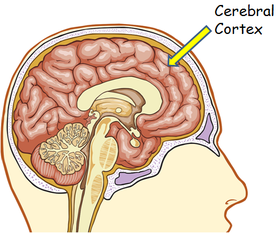Introduction
Ever met someone that learns subjects like Spanish and algebra with no complications- while you struggle with learning the difference between the imperfect and preterite? Well, I have. I have been a victim of the inability to learn the language Spanish for 11 years now. Some would say I’m suffering from a “Foreign Language Learning Disability”. The first to use this term was Professor Richard L. Sparks, he spent many years researching the validity of this disability. He even published an article, Journal of Learning Disability, but in that he stated that the “Foreign Language Learning Disability” was premature because of the lack of evidence to support it. So now I know I’m not the first person to question, why do some people learn new languages easily and some don’t?
Richard L. Sparks, he spent many years researching the validity of this disability. He even published an article, Journal of Learning Disability, but in that he stated that the “Foreign Language Learning Disability” was premature because of the lack of evidence to support it. So now I know I’m not the first person to question, why do some people learn new languages easily and some don’t?
Alternative Hypothesis: People who can’t learn a foreign language have a learning disability
Null Hypothesis: People who can’t learn a foreign language don’t have a disability, they just need to put in more effort to learning the material
How we Learn Languages
Remember talking about classical conditioning in your freshman Psych 100 class? That usually still applies with how most human learn things. Mammals, especially when young, are like sponges. They soak up a ton of knowledge and apply it the same way they learned it. You would think that learning a foreign language would come the same way as any other thing you learn. You learn it, study it, and then know it. That’s not the case for everyone. To some, Spanish comes very easily.
The cerebrum is what controls our thinking, reading, and learning. It’s the outermost and largest part of the brain. The two half, left and right, control the opposite sides of our body, meaning, the left side controls the right and the right side controls the left. This is also where our lobes are located. The frontal, parietal, temporal, and occipital lobes have different functions but once all these parts are put together with the spinal cortex, this makes the brain the central nervous system.
Study
Leonore Ganschow, EdD, is an associate professor for psychology at Miami University. He conducted a study comparing successful and non-successful foreign language  college students. He measured their intelligence, foreign language aptitude, and native and oral written language. No significant differences were seen in the intelligence and reading comprehension but significant differences where found in the Morden Language Aptitude Test. The conclusion of the study was that students with a foreign language disability may have underlying native language problems, especially in the syntax and phonology. They are working towards being able to diagnose someone with Foreign Language Learning Disabilities.
college students. He measured their intelligence, foreign language aptitude, and native and oral written language. No significant differences were seen in the intelligence and reading comprehension but significant differences where found in the Morden Language Aptitude Test. The conclusion of the study was that students with a foreign language disability may have underlying native language problems, especially in the syntax and phonology. They are working towards being able to diagnose someone with Foreign Language Learning Disabilities.
Another study conducted by Dr. Kenneth Dinklage of Harvard University, was conducted by interviewing students to determine their anxiety level with learning a new language. He found that a number of the failing foreign language students had previously be diagnosed with a disability but have overcame it, and now that disability has re-surfaced in the foreign language class. The problem is related to some other learning disability, not lack of motivation.
Conclusion
Every person struggles in one subject, even if they get an A, it takes them more effort to learn things in certain classes. Learning foreign language happens to be more common subject to struggle in than others. Neither the alternative hypothesis or null hypothesis can be determined completely correct, but eventually after more tests are done on this topic, there will be a definite answer.

 Instead of writing a blog about how cancerous treatments work, I wanted to go a step before that.
Instead of writing a blog about how cancerous treatments work, I wanted to go a step before that. 
 from the cells dividing wrong. This could be a disadvantage if a person smokes, or
from the cells dividing wrong. This could be a disadvantage if a person smokes, or The Cerebral Cortex
The Cerebral Cortex

 Now that the background on what diabetes is covered, the question then becomes, why is obesity increasing in america and is it correlated to diabetes? My first answer to this question was because kids are lazy. As Americans, our family traditions drastically differ from other countries. Our traditions have also greatly changed over a short period of time. The common belief that women stay home to be the rock of the household isn’t the norm anymore. Most children are lock-key kids, who let themselves into the house after school, make themselves an unhealthy snack, and wait until their parents get home from work. Looking at this simple change, it’s no surprise that children are becoming lazy, and no surprise again, lazy is the number one cause of obesity.
Now that the background on what diabetes is covered, the question then becomes, why is obesity increasing in america and is it correlated to diabetes? My first answer to this question was because kids are lazy. As Americans, our family traditions drastically differ from other countries. Our traditions have also greatly changed over a short period of time. The common belief that women stay home to be the rock of the household isn’t the norm anymore. Most children are lock-key kids, who let themselves into the house after school, make themselves an unhealthy snack, and wait until their parents get home from work. Looking at this simple change, it’s no surprise that children are becoming lazy, and no surprise again, lazy is the number one cause of obesity. or concern could be answered and validated within milliseconds. Contrary to that, the tall tale saying the sun is bad for our skin has been passed down generations by word of mouth. We’ve been told to cover up in the sun at the risk of getting skin cancer without any concrete proof. Now, with multiple experiments and evidence to support this theory, the internet would agree with the statement that the sun is harmful to our skin, but has new evidence about what the sun is doing to the inside of our bodies.
or concern could be answered and validated within milliseconds. Contrary to that, the tall tale saying the sun is bad for our skin has been passed down generations by word of mouth. We’ve been told to cover up in the sun at the risk of getting skin cancer without any concrete proof. Now, with multiple experiments and evidence to support this theory, the internet would agree with the statement that the sun is harmful to our skin, but has new evidence about what the sun is doing to the inside of our bodies. spots on the body. Evidence in this statement is found
spots on the body. Evidence in this statement is found

 r a day. Even when looking at the nutrition facts, most people focus on the calories and fat when they should be focusing on the sugar as well!
r a day. Even when looking at the nutrition facts, most people focus on the calories and fat when they should be focusing on the sugar as well! If a person wants to be on a healthy diet they should stick to foods with not a lot of sugar. Fruits are okay in moderation. Salmon, chicken and all vegetables are the healthiest things that a person could eat. They are loaded with good fats and will give the body healthy and necessary nutrition instead of the toxin, sugar.
If a person wants to be on a healthy diet they should stick to foods with not a lot of sugar. Fruits are okay in moderation. Salmon, chicken and all vegetables are the healthiest things that a person could eat. They are loaded with good fats and will give the body healthy and necessary nutrition instead of the toxin, sugar. o”
o” developed theories of disordering the healthy development of cells and mimicking healthy hormones.
developed theories of disordering the healthy development of cells and mimicking healthy hormones.  Dunkin Donuts, Americas largest retailer of coffee-by-the-cup, sells 1.7 billion cups of iced or hot coffee per year. Since 77% of Americans drink coffee, it can be predicted that the
Dunkin Donuts, Americas largest retailer of coffee-by-the-cup, sells 1.7 billion cups of iced or hot coffee per year. Since 77% of Americans drink coffee, it can be predicted that the  Although I have been targeting the caffeine in coffee, since it does have the highest amount, almost every drink has some sort of caffeine in it. Some drinks, for example 5-hour energy and red bull, are made solely to get energy. There are approximately 750 drinks that have caffeine in them. These drinks have a direct affect on the nervous system in the body. Unless a person only drinks green tea and water, a persons body will always receive some sort of caffeine. Don’t stop drinking coffee or any other drinks that contain caffeine, it does give many temporary benefits. But remember that caffeine is like any substance, if abused, it could damage many parts of the body.
Although I have been targeting the caffeine in coffee, since it does have the highest amount, almost every drink has some sort of caffeine in it. Some drinks, for example 5-hour energy and red bull, are made solely to get energy. There are approximately 750 drinks that have caffeine in them. These drinks have a direct affect on the nervous system in the body. Unless a person only drinks green tea and water, a persons body will always receive some sort of caffeine. Don’t stop drinking coffee or any other drinks that contain caffeine, it does give many temporary benefits. But remember that caffeine is like any substance, if abused, it could damage many parts of the body.
 en were randomly assigned to groups. Each group either experienced breathing exercises (pranayama), physical postures, or meditation. The experimenters compared exercise with a placebo, controlled comparison or standard care. The conclusions were that yoga had a positive impact on motor performance in children. It also suggested that yoga increases working efficiently and increases the ability to concentrate and focus, making it easier to put their energy into goal-driven tasks.
en were randomly assigned to groups. Each group either experienced breathing exercises (pranayama), physical postures, or meditation. The experimenters compared exercise with a placebo, controlled comparison or standard care. The conclusions were that yoga had a positive impact on motor performance in children. It also suggested that yoga increases working efficiently and increases the ability to concentrate and focus, making it easier to put their energy into goal-driven tasks. hese acids flare up the moment soda touches a mouth. Billions of acids start to attack the enamel, weakening and yellowing the teeth. These attacks last for about 20 minutes after each sip. These acids are called,
hese acids flare up the moment soda touches a mouth. Billions of acids start to attack the enamel, weakening and yellowing the teeth. These attacks last for about 20 minutes after each sip. These acids are called, 
 ere the areas of self in the posterior cingulate cortex. This is truly a one of a kind of practice.
ere the areas of self in the posterior cingulate cortex. This is truly a one of a kind of practice.




